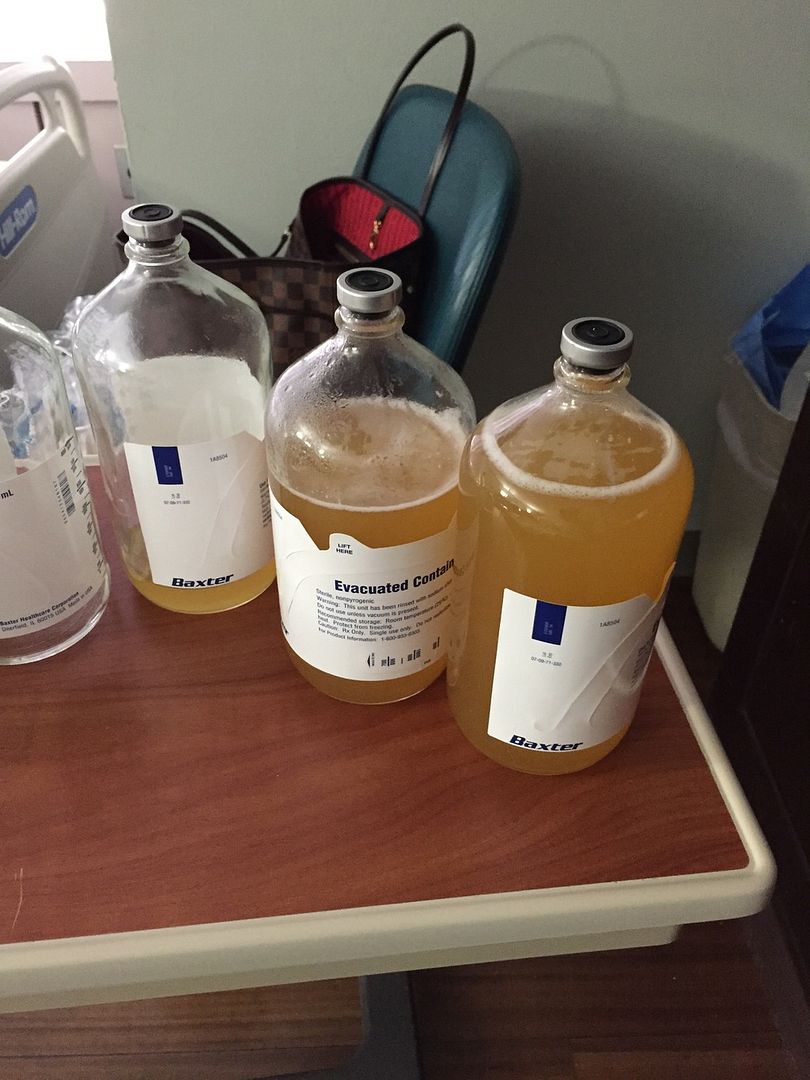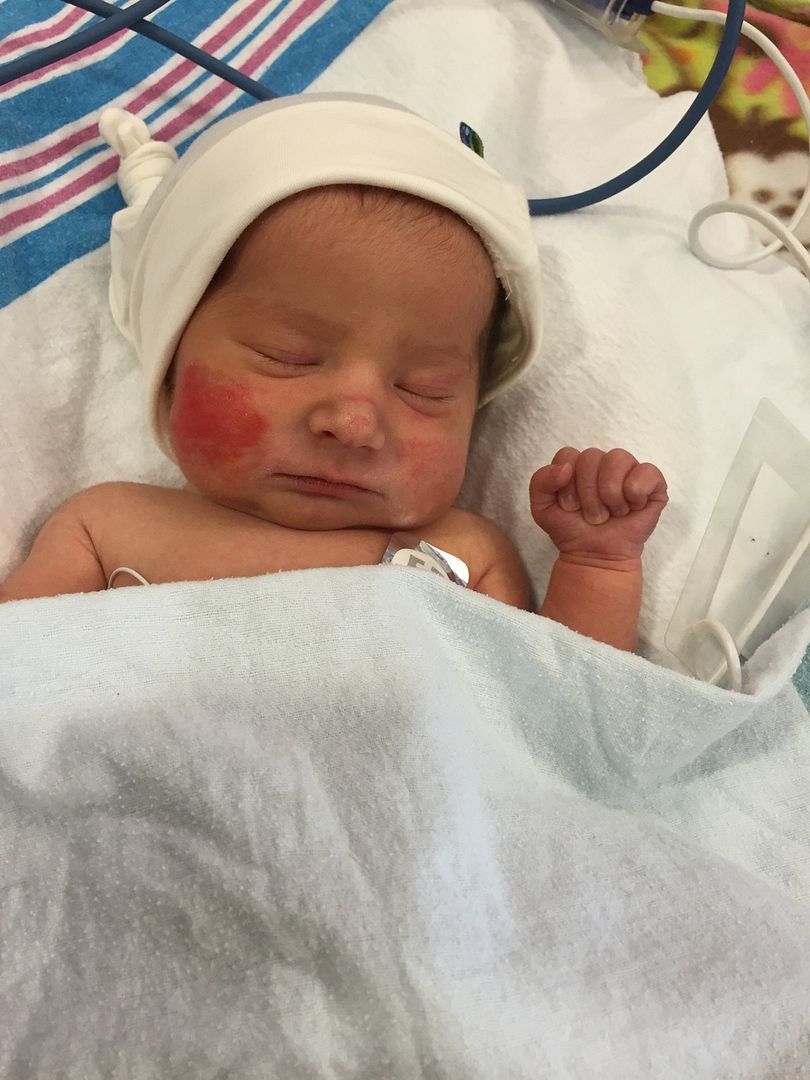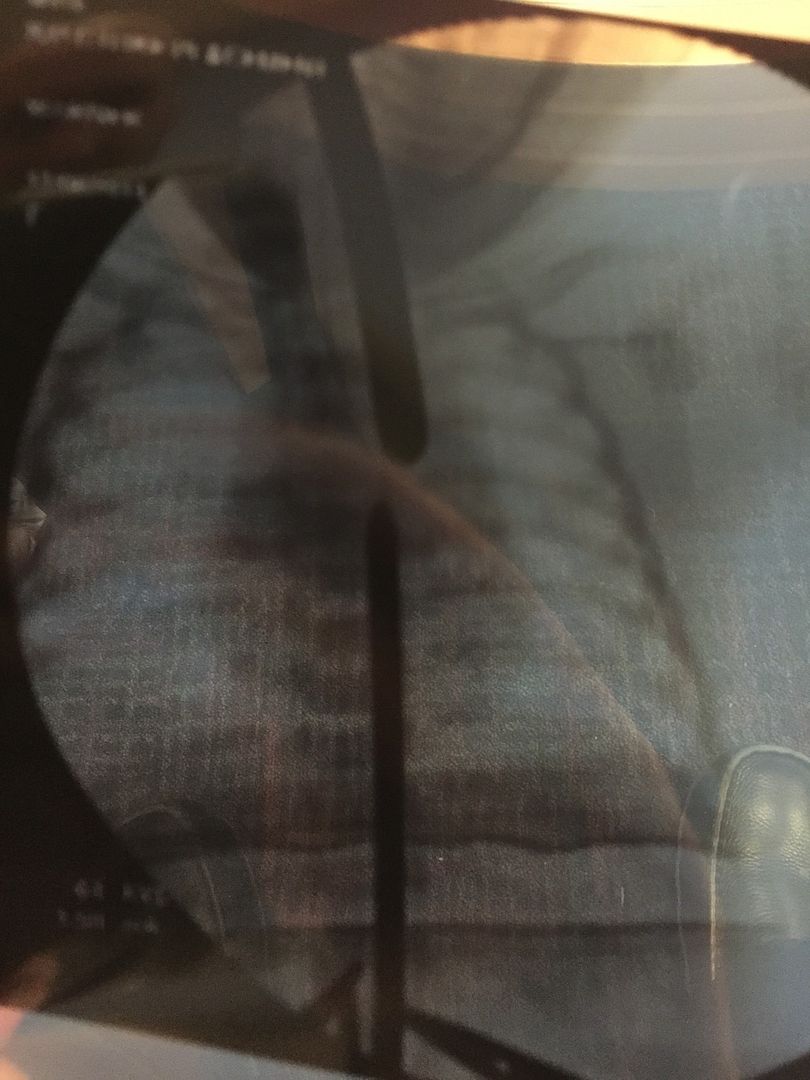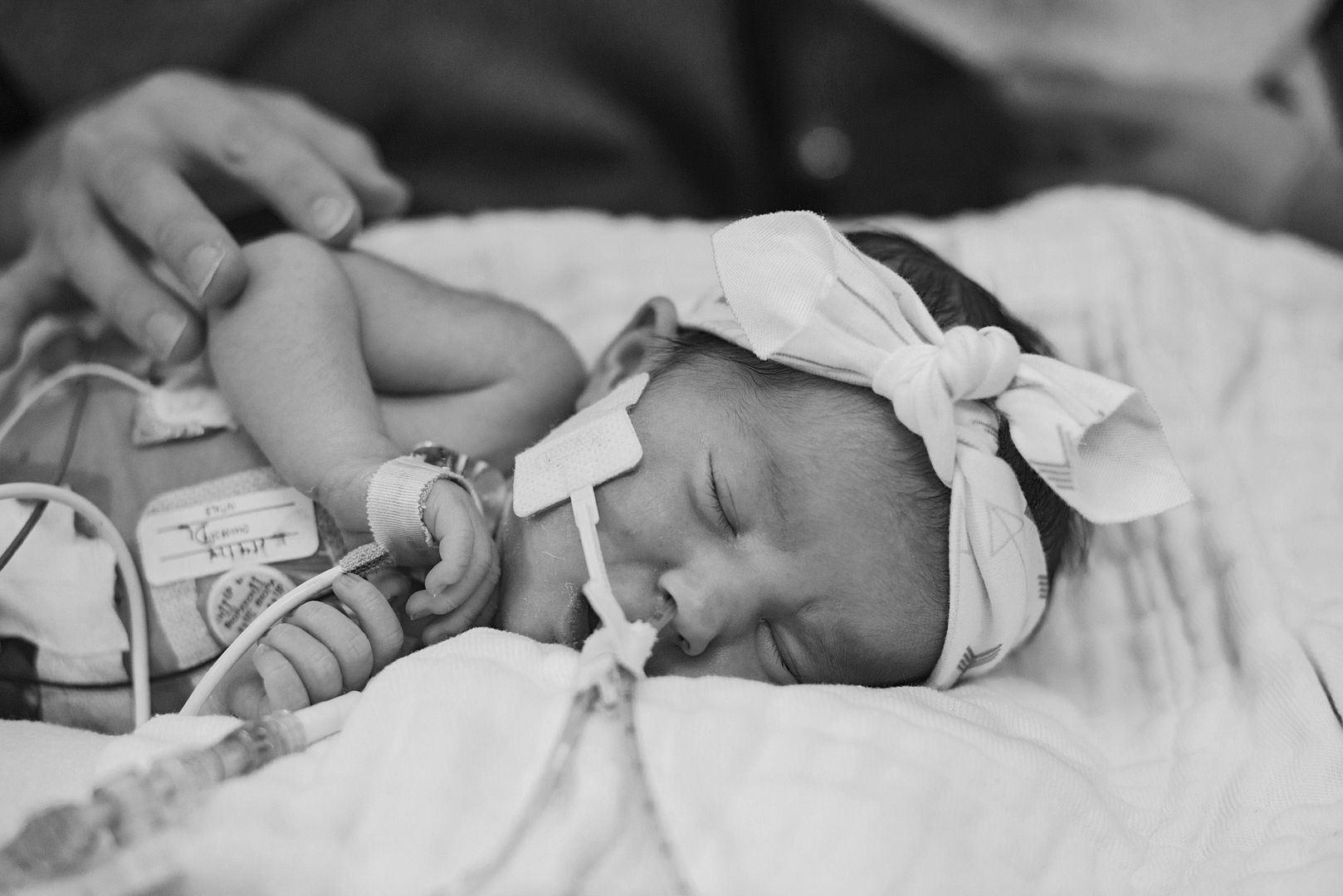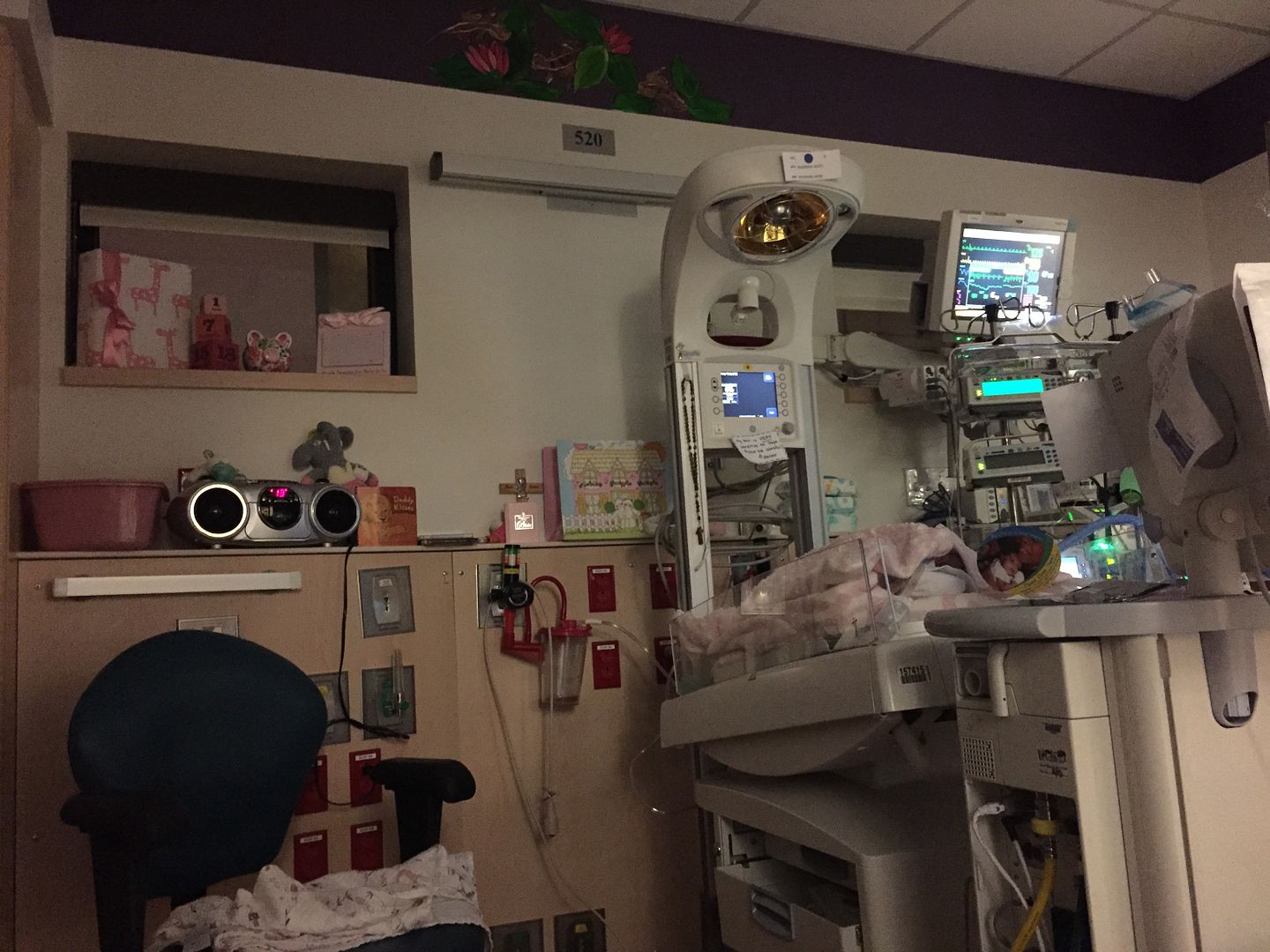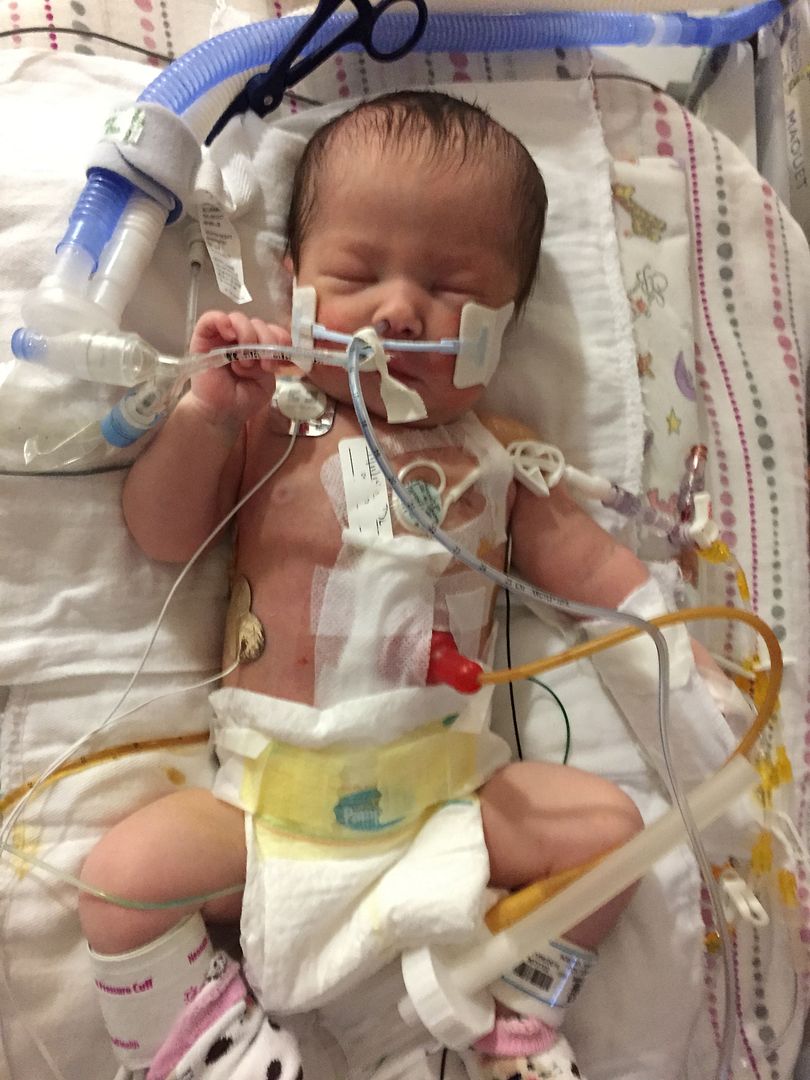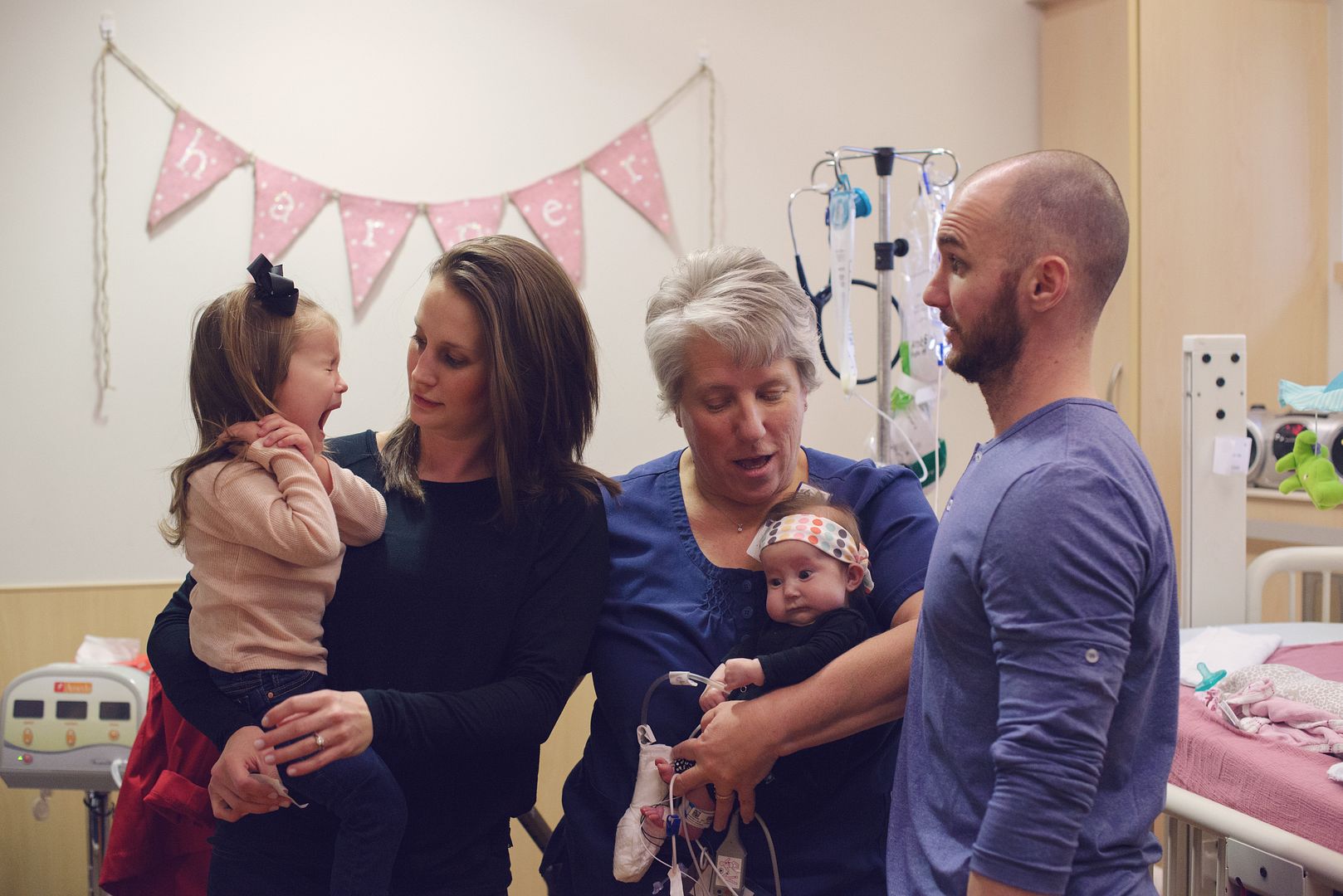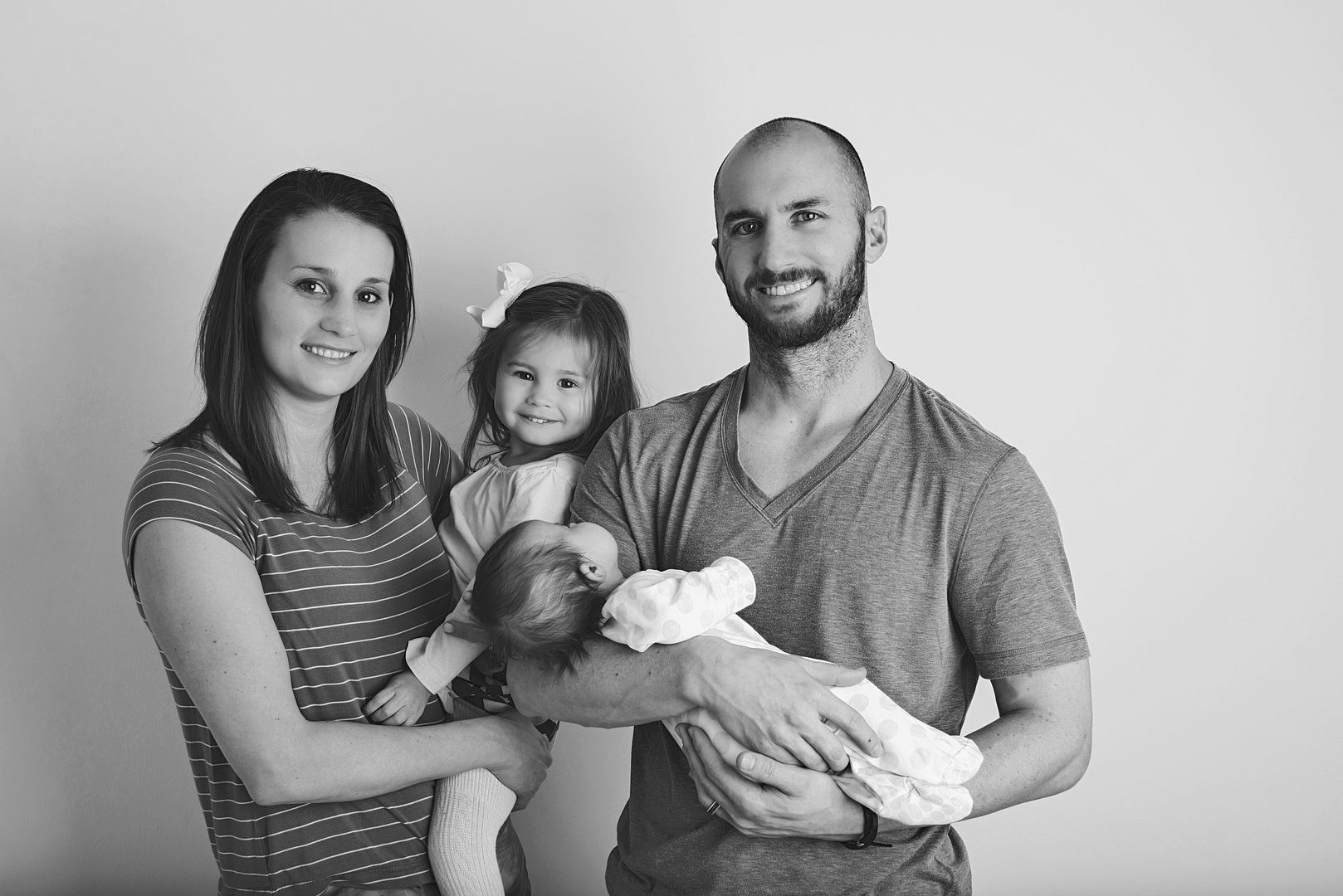When I was 19 weeks pregnant, I went to my OBGYN for a scheduled anatomy scan. We already suspected she was a girl, but I was excited to confirm her gender. I thought that was the whole point of this mid-pregnancy ultrasound. It was sort of a longer scan, but I wasn't focused on the time. I was loving every minute I could watch her move. I remember wondering if she would have dimples just like Tinley, or if she would have blonde hair...not like Tinley.
At the next appointment we still couldn't find it. Fear set in as I talked to the doctor who also didn't see a stomach and said I had slightly elevated fluid levels. I tried to call Shane to tell him that our new baby would possibly need surgery after birth. When he answered, I couldn't get any words out.
The Monday after this repeated scan, I visited the hospital to have a level 2 ultrasound. The picture on these scans are much more clear. I was hopeful we would see her stomach right away and I could leave. I prayed that if she did have something wrong, God would heal her and we could have another beautiful, healthy little girl. Unfortunately, the doctors confirmed that Harper's stomach was not showing up; and, in addition, I had 25 cm of fluid (an excess of about 10 cm, at this point). They brought in a genetic counselor and a nurse coordinator, and they told me Harper possibly had Tracheoesophageal Fistula and/or Esophageal Atresia. As a result I had a condition called polyhydramnios (excessive fluid).
We would have to wait until her birth to know where the disconnect was; but, in the mean time, they would do tests to rule out other genetic abnormalities. Their biggest concern was her heart. She has a muscular vsd (hole in her heart) and a PDA (leak), but these should resolve in the first two years. I'd rather not talk about what else could have been, because now that she is here we feel extremely blessed for the things that she avoided. My heart breaks for the other 50% of children who are born with TEF/EA in addition to many other serious abnormalities.
Because Harper couldn't swallow, I retained all of the fluid. It became hard to breath or do any strenuous activity. I had to lay down most of the day. At 34 weeks, after reaching 44 cm of fluid, I was drained through an amnioreduction. They took LITERS of fluid out! It was the scariest and most relieving feeling all at once. As they watched Harper on ultrasound, the doctor guided a needle in and out of my stomach, careful not to harm her. My uterus started to contract. With God's grace the doctors brought my fluid levels back down to normal. My labor would subside in a matter of hours. But after a couple of days, the fluid would reaccumulate. I had this procedure done twice.
Through God's provision, we made it to 39 weeks and I safely delivered little Harper on a beautiful Thursday morning. The same doctor who delivered Tinley generously came to a different hospital to deliver Harper as well. It was a huge relief to have another familiar face in the operating room. I was terrified in the minutes leading up to her birth. My doctor held my hand as they did my spinal block. On the table, I held Shane's hand and prayed for Harper-- that the Lord would make this easier on her. I asked Him to guide the doctor's hands and protect her. She came out screaming loudly, and I was thankful to hear her strength.
The hardest part of Harper's birth, and the part that always made me cry before she was born, was knowing I wouldn't be able to breastfeed her. Having already seen Tinley be satisfied and feel safe while nursing, I couldn't imagine not doing the same with Harper. Thinking about it broke my heart, and it still does.
Soon after she was born, you could hear in her cries that she was unable to swallow. I don't know how to describe it. It was like when a child is worked up from crying and they cough or choke a little. They placed a suction catheter down her nose to see if, by chance, it would reach her stomach. It stopped at around 11cm. The tube had to remain there to suction her saliva.
There are 5 main scenarios of Harper's condition. She has the rarest form named Type B - Esophageal Atresia with a Proximal Fistula. The top of her esophagus ends in a blind pouch. Her stomach is not connected at all. However, there is also a small connection of her esophagus to her trachea.
On day 2, Harper had a g tube placed in her stomach so that we could begin feeding her. Until then, she had received TPN. The doctor believed the gap between the two ends of her esophagus was very small. He suggested we do surgery on day 5 to repair her esophagus. Shane and I were so happy!
Harper came back from surgery extremely sick. She made a crying noise as she exhaled. I listened to her for hours, feeling helpless. We had no idea at the time, but her stomach had perforated. Bugs which normally live in your gut had escaped into her blood. From bacteria called Serratia she had become septic. They started heavy antibiotics; but after several days of the medicine and on full ventilator settings, she wasn't getting better. A chest x-ray revealed she had a pneumothorax (air in her chest cavity). They were afraid it was a tension pneumothorax (like being stabbed in the chest) and suggested her 4th surgery to remove the air and clean her chest cavity of any blood globs (for lack of a better word) which were holding Serratia and couldn't be penetrated by the antibiotics.
She was on the long road to recovery. For the next couple of months, we watched Harper fight her way off of the ventilator and eventually wean off of pain medications. Some days were harder than others.
Being in the NICU clearly isn't an experience you ever want to relive. Things are rough when you can't look at your child because you're so afraid to lose her. It's terrifying not knowing if she would make it through the night or not. Those moments physically hurt, and it's hard to breathe.
Our goal for Harper was to grow and get stronger at home before she attempted surgery again. I learned to do all of the care the nurses normally did. Harper learned to cough up her secretions so she wouldn't need a suction tube continuously in her nose. She did a lot of healing, that only God can explain; and after 81 days in the hospital, we brought our precious little girl home.
We will miss the doctors and nurses at STL Childrens who became family to us. They encouraged us and stayed strong for us when we weren't sure what to do. Harper's surgeon looked after her almost every day. We will always have so much respect for the talent God has given him, and for the fact that he used it to work on Harper's tiny body through 4 surgeries. Many of her nurses and doctors became my friends. They were the only people I could chat with about her condition who understood fully what I was talking about.
My dear friend (and Harper's nurse), Lorri, pushed Shane and I to Harper's side when it was hard to even look at her. At 5 weeks old, she helped me hold Harper skin-to-skin for the first time. The emotion that had built up is inexplainable. Moving Harper caused her a lot of pain because of the chest tubes. Instantly though, she stopped crying and snuggled onto my chest. I was so happy to feel, for once, that I could bond with my daughter. I was thankful for Lorri knowing what I needed as a mom. That's what family does.
After being discharged, I couldn't imagine bringing her to anyone but our "family" of doctors and nurses in STL. God kept tugging at my heart to be open to His plan for us though. Through our GI doctor in Atlanta, we got in touch with doctors in Boston. (I had consulted with their surgeon during my pregnancy). Boston Children's Hospital is one of the only hospitals in the world that specializes in TEF/EA. After talking to the nurse coordinator, Shane and I felt like it was a good idea to bring her there to be evaluated.
Harper and I traveled to Boston the next week. A number of things were determined. Through an endoscopy/bronchoscopy we found out that Harper also has severe tracheamalacia (softening of the trachea which leaves a smaller airway.), a laryngeal cleft (a deformity that makes it easier for fluid to get into the trachea/lungs), a paralyzed vocal cord (this is likely just temporary as it could be "stung" from breathing tubes/ surgery), a reoccurring fistula (which had previously been fixed), and a small hiatal hernia (her stomach is above her diaphragm about 1 cm).
After prayerful consideration, we have decided to continue Harper's journey in Boston. Switching care was the most difficult decision we have ever made.
Now that we have a clearer picture of her diagnosis, we feel confident this specialized team in Boston will treat all of her complications. They will perform a very intense surgery to fix the problems I listed. Also, through the Foker technique, they will "grow" her esophagus. Here is a link if you want to know more about that, or click here if you want to see a sweet little girl who already finished this surgery. In order for this "growth" to occur, she will need to be paralyzed (drug-induced paralysis under medical supervision) for 2-4 weeks. During this time, they will attach the two ends of her esophagus and let it heal before waking her up.
I'm hopeful the long days of Harper's extensive medical care are almost over. Her first surgery is scheduled for May 14th.
The purpose of this blog is to keep everyone updated with Harper's status. Hopefully it will turn into something else; but, for now, it's for Harper. I made a page for prayer requests so that you can pray "specifically" with us.
I am so thankful and humbled by all of the support we have received so far! We have felt peace many times that we don't understand. In the midst of all of the chaos, we find a lot of joy. Those moments, we believe, are a direct result of the prayer warriors who continually lift us up. Thank you for coming to God on our behalf! He has blessed our family immeasurably in the last 6 months. My prayer is that He will bless you as well for keeping us in prayer!
Sincerely,
Jess Robinson






